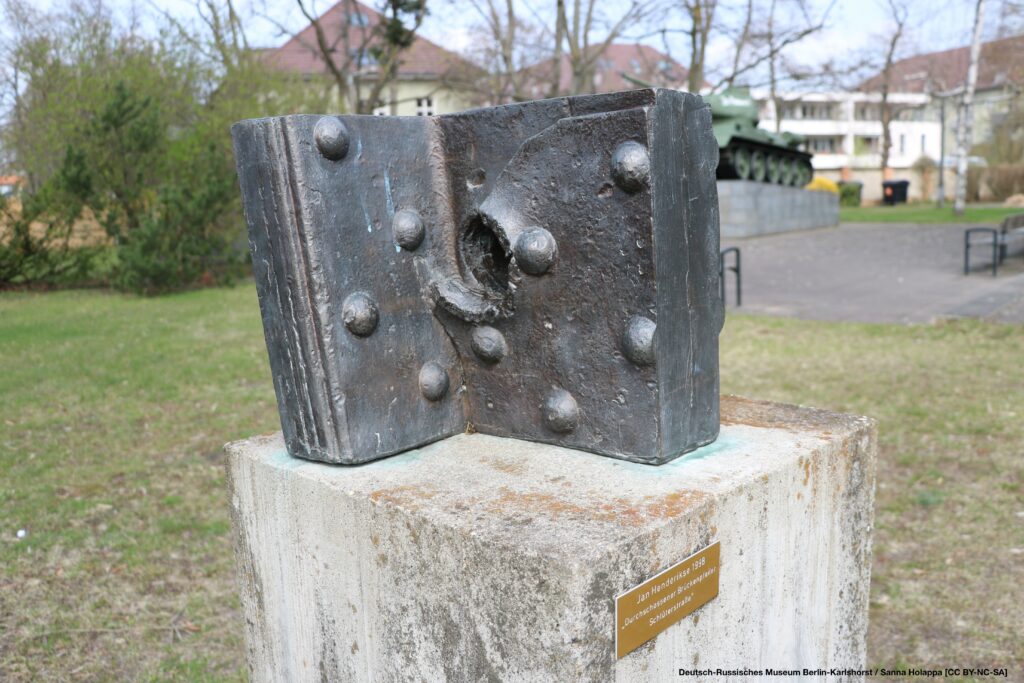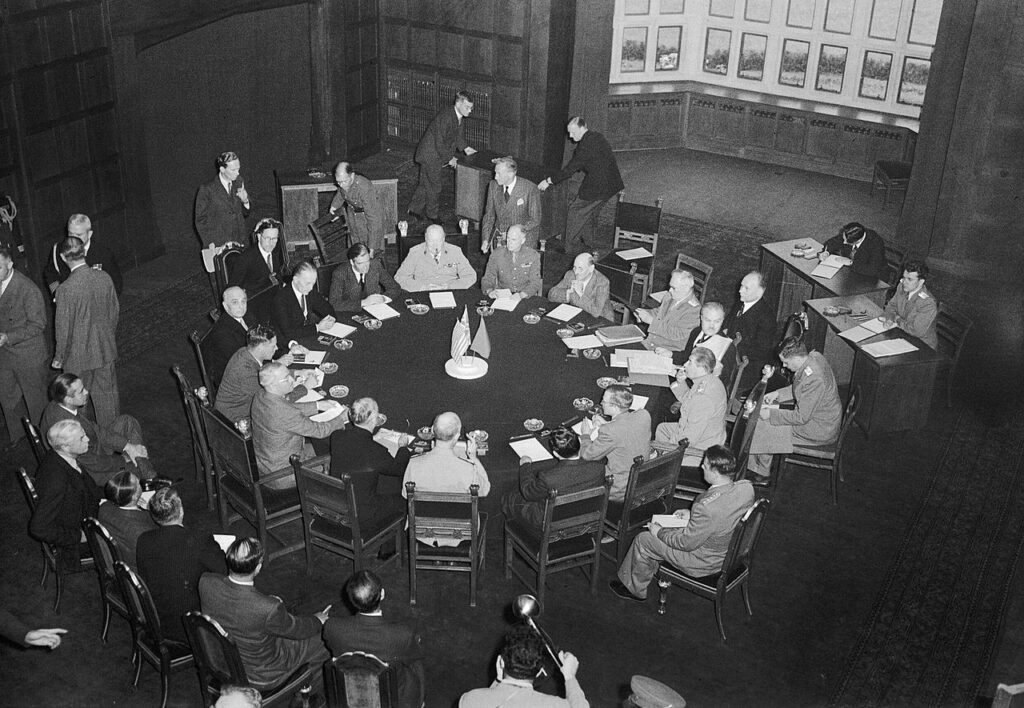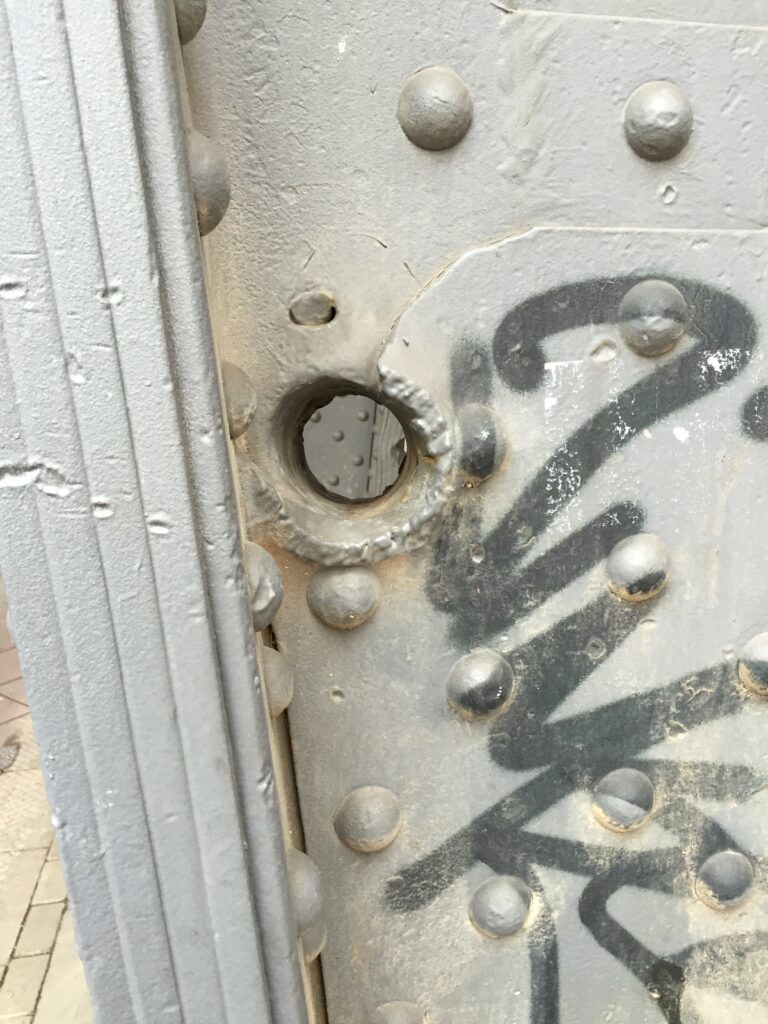
Berlin and its surroundings offer a fine line in historic tables.
We have the desk of polymath Alexander von Humboldt, friend of Goethe, that can be seen in the Märkisches Museum.
We have the table, around which the Truman, Churchill and Stalin sat deciding the future of post-war Berlin, Germany and Europe in 1945. This can be seen in Potsdam.

And finally, there’s a table in the Berlin district of Karlshorst. This one is on show in the venue where the unconditional surrender of Nazi Germany was signed by Marshall Keitel on 8th of May 1945.
But it’s not the table in Karlshorst we’re are interested in here. It’s the sculpture in the garden of what is now the German Russian Museum.
It is has featured in the garden since 2005, and is called ‘Shot-through bridge stanchion Schlüterstraße’.
Catchy.
It’s a bronze work by a Dutch artist called Jan Henderikse, and is from 1998.
The actual cannon hole and stanchion depicted in Henderikse’s piece do really exist. They can be still seen today. They are a testament to the violence of the battle for Berlin here on the 28th April 1945.
Have a look here at my short video about this Berlin battle field damage for some details and location. Then, if you’re passing – you can check it out, or I can show you on this tour
There is only one slight problem with the sculpture. It’s name.

It’s not on Schlüterstraße. It’s on the train bridge crossing Leibnitzstraße, corner of Kantstraße, admittedly only a block west.
But still a near miss.
